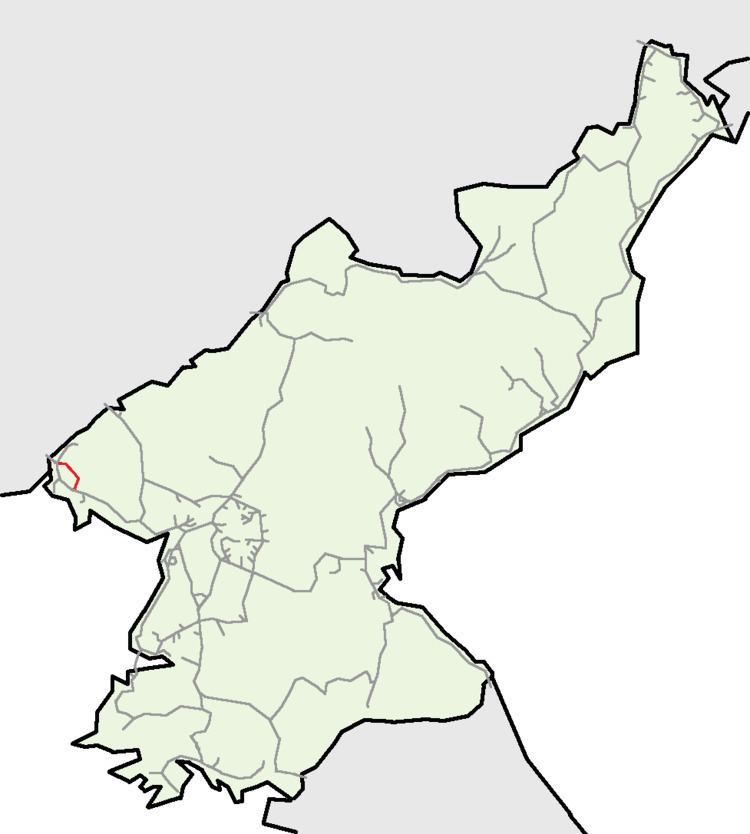Native name 백마선(白馬線) | Status Operational Stations 7 | |
 | ||
Opened 5 November 19051 April 1908 (Passenger service) Terminis Namsinuiju Station, Yomju Station | ||
The Paengma Line is a non-electrified standard-gauge secondary line of the Korean State Railway in North P'yŏngan Province, North Korea, running from Yŏmju on the P'yŏngŭi Line to South Sinŭiju, likewise on the P'yŏngui Line.
Contents
The ruling grade of the line is 13‰, and the minimum curve radius is 400 m (1,300 ft). There are 26 bridges with a total length of 1,363 m (4,472 ft), and two tunnels with a total length of 803 m (2,635 ft).
History
The Namsi (now Yŏmju)—South Sinŭiju stretch of railway was opened on 5 November 1905 as part of the mainline of the Kyŏngŭi Line from Kyŏngsŏng (Seoul) to Sinŭiju. On 16 October 1943, South Sinŭiju Station became a connecting station with the Sinŭiju—Yangsi—Namsi Yangsi Line, which the Chosen Government Railway had taken over from the privately owned Tasado Railway on 1 April of that year.
After the establishment of the DPRK and the nationalisation of its railways to create the Korean State Railway, the line from Ryongch'ŏn (formerly Yangsi) to Yŏmju (formerly Namsi) remained separate as the Yangsi Line. In 1964 the Korean State Railway decided to make the shorter Yangsi Line the mainline of the P'yŏngui Line, and the former mainline between Yŏmju and South Sinŭiju was separated, becoming the current Paengma Line.
Services
There is extensive freight traffic on the line, serving the large Ponghwa Chemical Complex at Paengma and several other factories.
A pair of local trains, numbered 418/419, operate between Sinŭiju Ch'ŏngnyŏn and Yŏmju, running along this line instead of the P'yŏngŭi line. There is also a short branch from Paengma to the private Songhwa Residence.
Route
A yellow background in the "Distance" box indicates that section of the line is not electrified.
